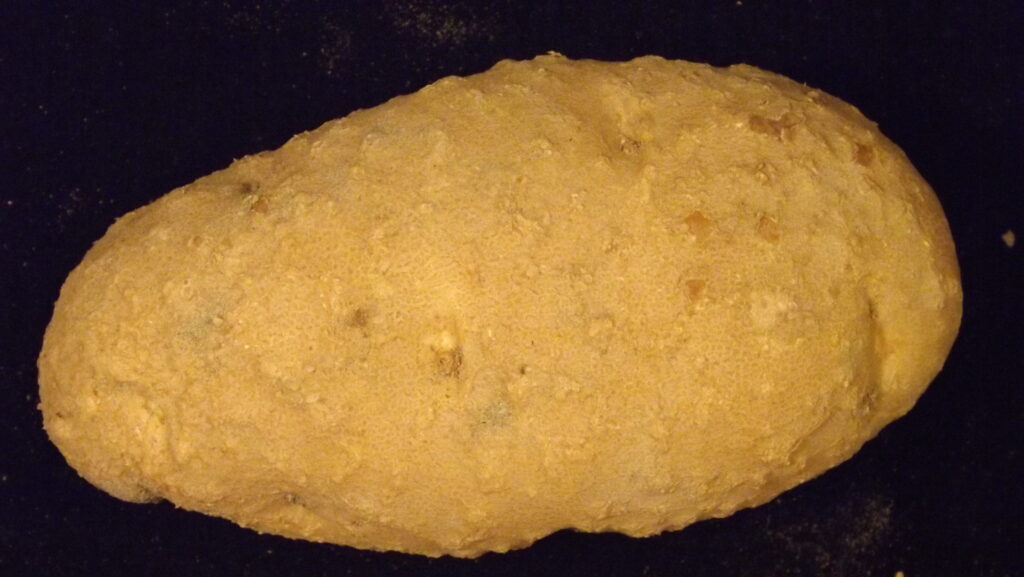
The PAPAS project
About 20% of what a farmer spends to grow a crop of potatoes is for nematicide applications.
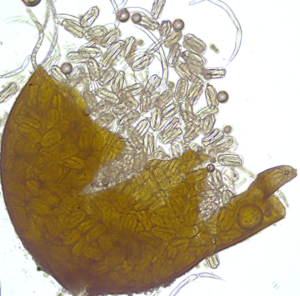
In Idaho, the pale cyst nematode (Globodera pallida) alone causes a loss of $25 million per year, even though it occurs on only 1% of the potato acreage in the state. If left unmanaged, such potato cyst nematodes (PCN) can cause upwards of 80% yield loss.
Under strict regulations by USDA – APHIS (Animal and Plant Health Inspection Service), so far, the pale cyst nematode occurs only in Idaho. Root knot and lesion nematodes, though, are widespread. In some cases, if only 6% of a shipment has signs of the Columbia root knot nematode (RKN), the whole shipment is destroyed.
To lessen the costs and increase the effectiveness of nematode control, a group of 17 scientists are working to improve science-based nematode management strategies. Led by Louise- Marie Dandurand of the University of Idaho, the research effort is called Potatoes and Pests: Actionable Science Against Nematodes (PAPAS). The project is supported by a $6.8 million dollar grant from the U.S. Department of Agriculture-National Institute of Food and Agriculture. As the PAPAS website notes: “Plant- parasitic nematodes pose a continuous threat to potato production in the U.S., and the viability of international markets for U.S. potatoes.”
Potato nematodes reduce yield and cause internal and external defects, lower the potato market value and cause crop rejection.
The PAPAS research will expand the foundation for Integrated Nematode Management for nematode management in potato. Hailing from the USDA Agricultural Research Service and universities in Washington, Oregon, New York, Michigan and Idaho, the researchers employ a three-pronged campaign to develop decision support models, nematode-resistant potato varieties and new nematicides.
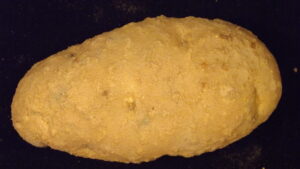
The first initiative is to improve the molecular diagnosis of nematode races and species, along with better estimates of nematode incidence and population. The scientists will use the nematode identification and the population data to create action thresholds and decision models that enable growers to better predict the nematode damage facing their farm so they can choose strategic actions and use less of the expensive, toxic nematicides.
The second prong of the research is to develop commercial potato varieties that can resist both PCNs and RKNs. Already resistant varieties are available for the golden (cyst) nematode, Globodera rostochiensis, found only in New York, but not for G. pallida, found only in Idaho. A third cyst nematode, G. ellingtonae, found in Oregon and Idaho, was described as a new species in 2012. Because cysts with viable eggs can last in the soil for decades, the cyst nematodes are worrisome even though, so far, they are much less widespread than RKNs. The RKNs targeted for research include the Columbia RKN, Meloidogyne chitwoodi, and the Northern RKN, M. hapla.
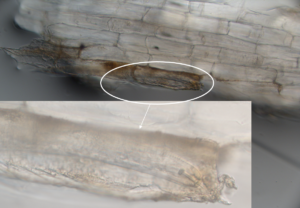
Creating new potato varieties by genetic modification shows promise. One project alters potato plants to silence a particular nematode gene. With the gene disabled, the worm cannot parasitize the potato plant effectively. Another genetic modification induces the potato plant to make toxins that poison the nematodes.
Boosting existing potato immune responses may also increase nematode resistance in potato. Apart from directly modifying the potato, scientists test natural substances that elicit plant defenses. The latter may prove more acceptable to consumers who are wary of eating genetically modified food. So far, all the above methods have shown some success in reducing nematode infections in potato plants.
The third prong of PAPAS research is to develop one or more new nematicides based on toxins produced by Solanum sisymbriifolium, known as litchi tomato, sticky nightshade, red buffalo-bur and other common names. In the same genus as potatoes, it is currently used as a trap crop.
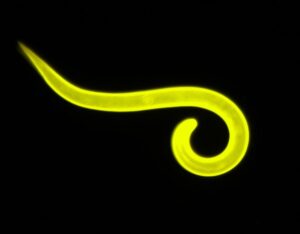
The way the trap crop works is that the plants produce chemicals that induce the nematodes to hatch, but the plants also produce other chemicals that inhibit the worms. The nematodes cannot reproduce and complete their life cycle. If planted a season ahead of potatoes, litchi tomato can reduce the population of PCN’s in the following potato crop by up to 97%. Litchi tomato does not provide an economic return to the grower, though. Thus, the current research is to purify and identify the nematode-inhibiting chemicals, which can lead to producing those chemicals synthetically for commercial use.
In the meantime, potato growers can take several steps to minimize nematode damage. The first is to plant certified seed, so as to not introduce new nematodes to the farm. The second is to monitor fields for patches of plants showing stunting and chlorosis, which may be symptoms of nematode damage to plant roots. Soil samples from those patches should be sent to a lab for nematode identification. Depending on the state, the Cooperative Extension may assist with soil sampling, such as information, sampling boxes, transport of the sample to the lab, diagnostics and subsidized cost.
If the tests show the presence of nematodes, the grower can apply a nematicide. Next year, he or she can choose to plant a resistant variety if available, grow an antagonistic crop or precede the potato crop with litchi tomato as a trap crop.
Finally, the grower should be careful not to move soil from field to field. As Dandurand notes, “Any equipment entering a PCN- infested field is power washed and then sanitized before entering a different field.” Boots should be cleaned as well.
TYPES OF NEMATODES
The nematodes afflicting potato plants fall into four groups. Different species prevail in different regions. The first group is the potato cyst nematodes, which are currently limited in the U.S. to specific sites in Idaho and New York. The cysts are visible to the naked eye on the outside of the plant roots as individual bumps, colored as their names suggest: whitish for the pale cyst nematode and gold for the golden nematode. Resistant potato varieties are available for the latter. Both of these species are regulated quarantine pests.
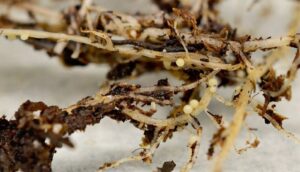
The second group of potato nematodes is the RKNs. Found all over the world, they make the tubers look bumpy. No commercial potato cultivars are resistant to RKNs. The Northern RKN is common in cooler states, and the Columbia RKN occurs only in the Northwestern states.
The third group is lesion nematodes, Pratylenchus spp., found throughout North America. They feed within the plant roots. The feeding damage predisposes the plant to secondary infections, such as the fungus that causes Early Dying syndrome.
The final group, stubby root nematodes, feed on root surfaces, causing many stubby roots to form. Alone, they do not cause commercial damage, but they transmit tobacco rattle virus, which causes corky spot disease. The disease impairs tuber quality, leading to crop rejection.
Prevention and management of the four types of nematodes will improve as PAPAS and other research projects discover new information. To keep up on the latest developments on how to manage nematodes, check the website www.potatonematodes.com and local Cooperative Extension websites.







